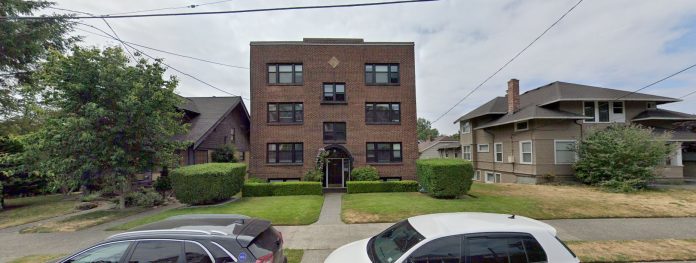Every eight years the City of Seattle has a chance to make progressive changes to how we grow ranging from jobs, amenities, mobility and — most importantly — housing. And, in every one of these cases, we did the bare minimum and only saw things get worse by not adding enough homes. In 2016, we set 20-year targets of 115,000 new jobs by 2035 and planned for 70,000 new homes. This guess was far too low and limited our housing production which exacerbated the crisis we are in today.
The problem is job growth is a guess, and housing growth is a planned limitation
Seattle’s “major updates” have never met demand of actual job or population growth due to low expectations. In just five years after the 2016 plan update was passed, we have added 80,000 jobs, or 70% of that 20-year growth target. So, the 70,000 homes, it turns out, are not enough and our housing crisis continues to worsen.
For 2024’s baseline target, the City is establishing an estimated 112,000 new homes and 169,000 new jobs by 2040. This is less than 5,000 homes and 7,000 jobs per year respectively. These woefully low figures make you wonder if these planners are in complete denial of what is currently going on.
Seattle has averaged a job growth of 17,000 per year this last decade, peaking at nearly 24,000 new jobs in 2017. By 2019, Seattle’s 68,000 new homes closing out the decade could not keep up and we were left 45,000 homes short from matching 2010’s jobs per home ratio. By 2020 that deficit grew to 57,000. And in 2021 Seattle added over 18,000 jobs as we await the housing growth figures that likely will not meet demand.
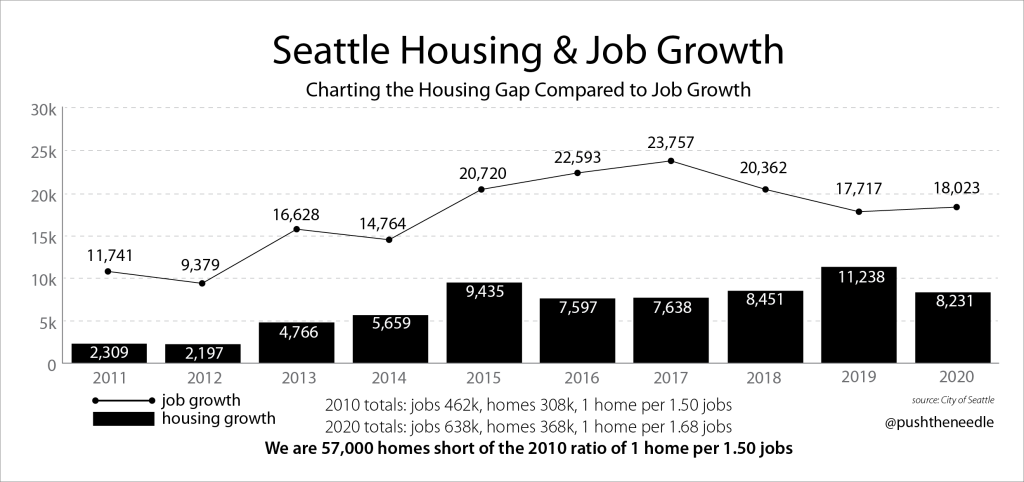
Seattle needs to allow housing growth to exceed targets
Unlike job growth targets, housing growth targets are never allowed to exceed expectations. We have zoning restrictions that determine how big, how tall, and how many homes go on every single parcel of land we have. But job growth? That is allowed to grow freely and blow past expectations, luring more commercial development and people to this region. Housing growth should be allowed to expand with job growth, matching home creation with job creation. The 2024 Comprehensive Plan Update must recognize this or else we will continue a path of unaffordability with more people falling into housing insecurity or homelessness.
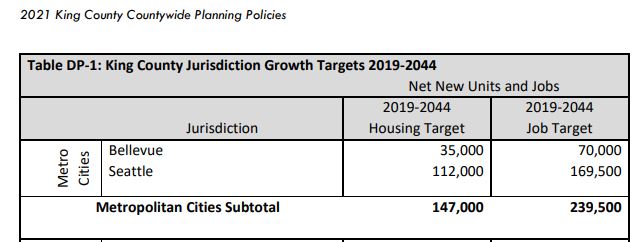
Seattle needs a real Major Update, not one in name only.
We have got to grow out of this idea that we are a suburbanized city with pockets of density contained in imaginary boundaries. We are one of the fastest growing, most desirable economic destinations in the country. Young people finishing college ranked Seattle first in a national survey of where they plan to seek employment. We have a robust employment opportunity here with multiple headquarters in our region, one of which is in downtown Seattle, and many other employers seeking to grow within our city which has a high demand for jobs.
When the job growth laps the target, our housing growth will not be able to keep up. This is largely because Seattle is determined to keep 29 square miles of land zoned for single-family housing, putting a straight jacket on housing growth expecting our planning department to conduct magic tricks or miracles to escape.
We need to loosen the grip on housing growth and let it happen as freely as job growth
Solving for this may sound bold, but I assure you, it won’t take much. Legalizing three story, point access sixplexes and 50% lot coverage in single-family zones gives us the capacity for 825,000 new homes in formerly single-family zoned neighborhoods alone. Whether that capacity is too high doesn’t matter, it gives us the opportunity to meet demand. To create the targeted 112,000 new homes is just 22,000 sixplexes, or, less than 5,000 a year to surpass this 25 year target in only five years. 22,000 single-family conversions would keep 87% of our single-family housing stock as is.
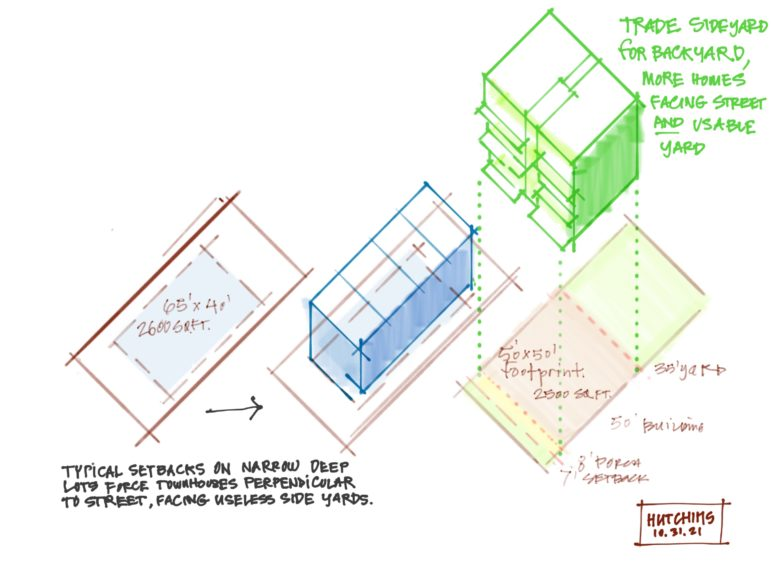
Point access, single stair sixplexes are something legal to build by building code, the problem is we have nowhere to put them. The ability to stack flats with shared circulation gives us housing that meets accessibility needs, allows people to age in place, and doesn’t wreck a small footprint by putting in a stair in every home like we do with rowhouses.
Seattle should return to our neighborhood building roots
When Seattle built itself out in the turn of the century, we mixed apartments and craftsmen bungalows all over the place. This is the charm of neighborhoods like Capitol Hill, Eastlake, Queen Anne, and Wallingford. These neighborhoods are also some of the most competitive ones to live or work in due to their proximity to downtown and rich amenities in walkable distances. We should replicate this so all the neighborhoods can attribute to the same desirable planning practices and not limit them for the wealthiest buyer and renter. Doing so will make all neighborhoods—including the ones mentioned above—more accessible for all.
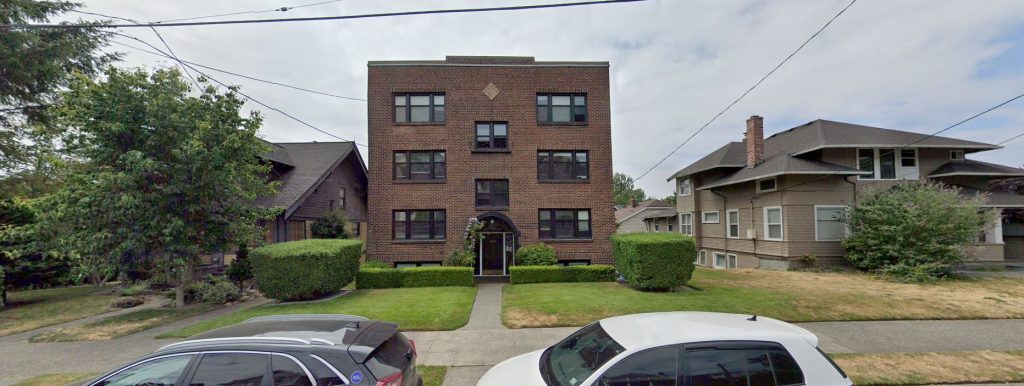
Seattle needs to encourage housing growth like we encourage job growth
Seattle’s Comprehensive Plan doesn’t have the ability to limit job growth. There are no upper-level setbacks or modulation requirements to take jobs away. There are no community meetings to decide if the jobs “fit the character of the neighborhood”, and we don’t put job growth through a design review. So why do we put housing growth on trial? We need homes to meet demand, meaning we must exempt this modest growth from Seattle’s traditional bottleneck of process.
Seattle is not a small city; we are four times larger than the island of Manhattan and twice the size of Barcelona and Paris. Those cities each have populations two- and three-times Seattle. In Barcelona’s Eixample neighborhood, life is not a struggle. You can walk to your favorite restaurants, schools, work, and parks. You can also walk to famous tourist destinations you and I pay thousands of dollars to see for ourselves. Teachers, doctors, lawyers, and baristas are all neighbors and don’t have the discomfort of being displaced and sent to the urban edge, forcing longer, more punishing commutes. Isn’t this what Seattle aspires to be?
The Comprehensive Plan Update should look beyond 2040
Seattle planners need to wake up and look at the realities of where they work. We are not going to modestly add jobs at a fraction of the rate we did the last 10 years. We shouldn’t limit our neighborhoods to suburban housing solutions unless we are comfortable with those homes rising to $3 million. We won’t be able to house those young graduates flocking to Seattle’s robust housing market. And we will just cause more homelessness than we have today without growing enough housing.
Wouldn’t it be great if our 2024 comprehensive plan update went further than projections and didn’t feel the pressure by 2032 when we will do this all over again? Imagine matching the needs of our city with the stroke of a pen and building in the safety valve to meet housing needs when your projections are proven to be short sighted. Why not plan for 300,000 new jobs and match housing accordingly? That should give us enough cover. If the high jobs target is wrong, who cares? It’s only a guess anyway. Better to have higher capacity than a lower one, just ask these same planners how the last decade went.

Ryan DiRaimo
Ryan DiRaimo is a resident of the Aurora Licton-Springs Urban Village and Northwest Design Review Board member. He works in architecture and seeks to leave a positive urban impact on Seattle and the surrounding metro. He advocates for more housing, safer streets, and mass transit infrastructure and hopes to see a city someday that is less reliant on the car.


